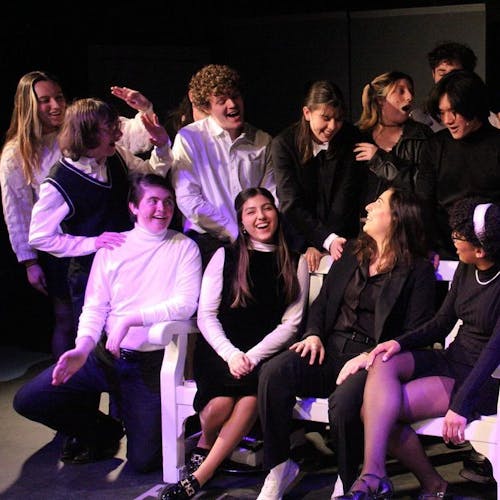Zimmerli exhibition demonstrates ties between arts, STEM

The Zimmerli Art Museum hosted its second Art After Hours event of the semester last Tuesday, Oct. 1, centering around its impressive new creative exhibition rooted in scientific knowledge: “Dimensionism: Modern Art in the Age of Einstein.” The rather interdisciplinary evening was buzzing with conversations revolving around the two stars of the show, science and art.
This first-of-its-kind touring exhibition is organized by the Mead Art Museum of Amherst College and explores the complex but significant relationship between great works of modern art and scientific concepts across disciplines like physics, astronomy and biology. The intellectual stimulus for the exhibition was the 1936 “Dimensionist Manifesto,” which postulated that artists' work should be inspired by the scientific and technological marvels being utilized and discovered around them.
The work of celebrated artists like Orphist couple Sonia and Robert Delaunay, Dadaists like Marcel Duchamp and Francis Picabia and expressionist Wassily Kandinsky currently grace the Voorhees Gallery and will do so until Jan. 5, 2020.
Two informative tours of the “Dimenisionism” exhibition were led by Dr. Donna Gustafson, curator of Modern and Contemporary Art and Mellon director of Academic Programs at the Zimmerli Art Museum. “This exhibition is about art and science and we were very interested in bringing in as many departments from on campus as possible. It gave us an opportunity to work with the sciences in a way that we really don’t often get to,” she said.
Gutafson went on to describe the people responsible for creating the works currently on display in the gallery.
“The work in the show is visually compelling and classic modernism. It’s work made by a group of artists who really thought of themselves as an international contingent bridging art and science ... They were optimistic about technology and the future, but then World War II happened, and this optimism really started to falter because they saw the destructive end of technology harnessed to wreak havoc," Gustafson said.
She added: "This exhibition, for me, is really a beautiful moment when artists, musicians, poets, writers and scientists were all working together and everyone had faith in what they were doing."
Gustafson also elaborated on the films by influential French filmmaker Jean Painlevé that were played throughout the evening, engaging with various physical and biological phenomena in novel ways.
“Painlevé was a French scientist who was actually one of the first scientists to incorporate filmmaking into his scientific research. He really tried to use film in a way to explain science to a general audience. These films are black and white and from the 1920s and 30s, they’re very interesting. Painlevé shows this perfect connection between science and art because he was so beloved by the Parisian surrealists who saw an incredible new world he was representing to them in film,” she said.
In conversation with Thomas Sokolowski, director of the Zimmerli Art Museum, I came to know more about how versatile this exhibition really was. “On the one hand, in the 20th century, people were looking down at microscopes and seeing things they had never seen before. On the other hand, people were looking beyond into the universe from telescopes to see things they never saw before," he said.
So, “Dimensionism” is about this new expansiveness of art, when you think about it in terms of some of the imagery in the exhibition. When Einstein was thinking about the third, fourth and fifth dimensions and wave-particle duality (things I don’t know much about), Picasso was talking about things like Cubism, where the idea of "Could you see an object 360 degrees from just one angle?" is explored.
“The left brain represents logic and the right brain represents creativity, but the two can overlap and we see that in the diverse, multidisciplinary but connected combination of majors and minors students choose nowadays. Some of the best musicians are actually mathematicians and scientists," Sokolowski said.
He added: "When we first started meeting with Rutgers faculty to plan this exhibition and people started throwing out ideas, it was so exciting. The funny thing was that the scientists were being far more expansive and thinking out of the box more than the artists were. There’s an osmosis of pure thought going on here.”
The Zimmerli Art Museum will also be hosting a symposium on Friday, Oct. 4, based on the "Dimensionism" exhibition called “Interdisciplinary Dimensions: A Rutgers Symposium.” The day will be dedicated to exploring a multitude of interdisciplinary research that marries technology, science and art cultivated at Rutgers University.



